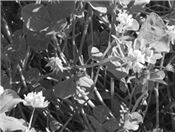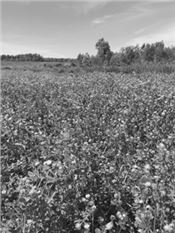|
AgCenter Research Focuses On Pollinator, Forage Relationships
WINNSBORO, LA.
Pollinator health continues to be the buzzword among researchers working to enhance pollinator populations responsible for sustaining world food production.
Farmers and ranchers play a critical role in sustaining pollinator populations by providing habitat for common species of bees and other pollinators.
LSU AgCenter forage specialist Wink Alison, forage research scientists Buddy Pitman and Kun-Jun Han and entomologist Kristen Healy are looking at how grassland-based production systems can be managed to improve habitat for pollinators without sacrificing forage yield and quality.
The research team recently received a $406,300 grant from the U.S. Department of Agriculture Foundational and Applied Science Program to conduct a four-year study on pollinator diversity, abundance and health responses to legume plantings in grassland-based systems at three AgCenter sites in north Louisiana.
“Enhancing pollinator habitat is a global concern,” Alison said.
The study will focus on identifying legume species that can enhance pollinator populations as well as provide forage for livestock and support environmental benefits such as soil nitrogen, cover crop functions and wildlife habitat.
“We are looking at how pollinator habitat can be managed to improve pollinator health and diversity without sacrificing benefits in nutritive quality that legumes provide in livestock production,” Alison said.
The team will study various clovers as well as cowpeas and alfalfa, all of which have different blooming periods from early spring to late summer, to learn more about pollinator diversity and seasonal habitat preferences.
“We also want to compare the nutritive quality of these forage systems to determine differences in yield and quality from a cattle production perspective,” he said.
Crimson, ball, arrowleaf, berseem, red and white clovers are cool-season legumes included in the study because each has a different blooming period from spring into early summer.
Cowpeas, which are a warm-season legume, will provide summer blooms for pollinators and be evaluated along with alfalfa.
Alfalfa is not typically produced in Louisiana because of unfavorable environmental factors that include weeds, insects and disease pressure. But growers have had some success in areas along the Red River where the alfalfa trials will be conducted, Alison said.
The legumes will be harvested at different times during the growing season to try to extend the sequence of bloom periods.
“If you don’t remove the vegetative growth at some point, the plants will bloom over a short time period. But by harvesting portions of a stand, we can extend the period of blooming in any species,” Alison said.
The researchers want to assess how best to optimize the time that blooms are present in the field and also evaluate the effects on nutritive value for livestock, he said.
Typically, the nutritive value of a plant decreases once the plant enters the reproductive stage or starts to flower.
“We want to get an idea of how much yield and quality of the legumes may be reduced if harvest or grazing is delayed to promote extended pollinator activity and try to find an appropriate balance,” Alison said.
The researchers will use sophisticated laboratory testing to evaluate the legume preferences of the pollinators and analyze their health status throughout the year.
Pollinator samples will be collected during each flowering period to determine the diversity and abundance of insects present among the legume species.
The samples can be compared using a DNA-based analysis to determine pollinator preferences among different plant species, Healy said.
In addition, biomarkers taken from the samples will be evaluated to correlate their health status with the floral traits in each legume species.
Determining insect health status gets a little complicated, Healy said.
“We are looking at gene expressions, which are RNA-based and continually changing according to what is going on in their environment,” she said.
Traditionally, pollinator health has not been associated as much with forage-based production systems as with other crop-based systems, but there is an advantage to cattle producers to have legumes in their pastures, Alison said.
“Livestock producers are always looking for ways to improve the quality of their pastures,” he said.
Legumes are higher in nutritive value but not as consistently productive or dependable as warm-season grasses such as the bermuda, bahia or dallis grasses commonly found in Louisiana pastures.
“If you can improve the forage quality and still get the quantity that the grasses produce, then the overall production level rises,” Alison said. ∆

A honeybee collects nectar and pollen on ball clover.
Photo by Wink Alison/LSU AgCenter

An area planted with a wildflower seed mix thrives in Concordia Parish.
Photo by Kylie Miller/LSU AgCenter
|
|